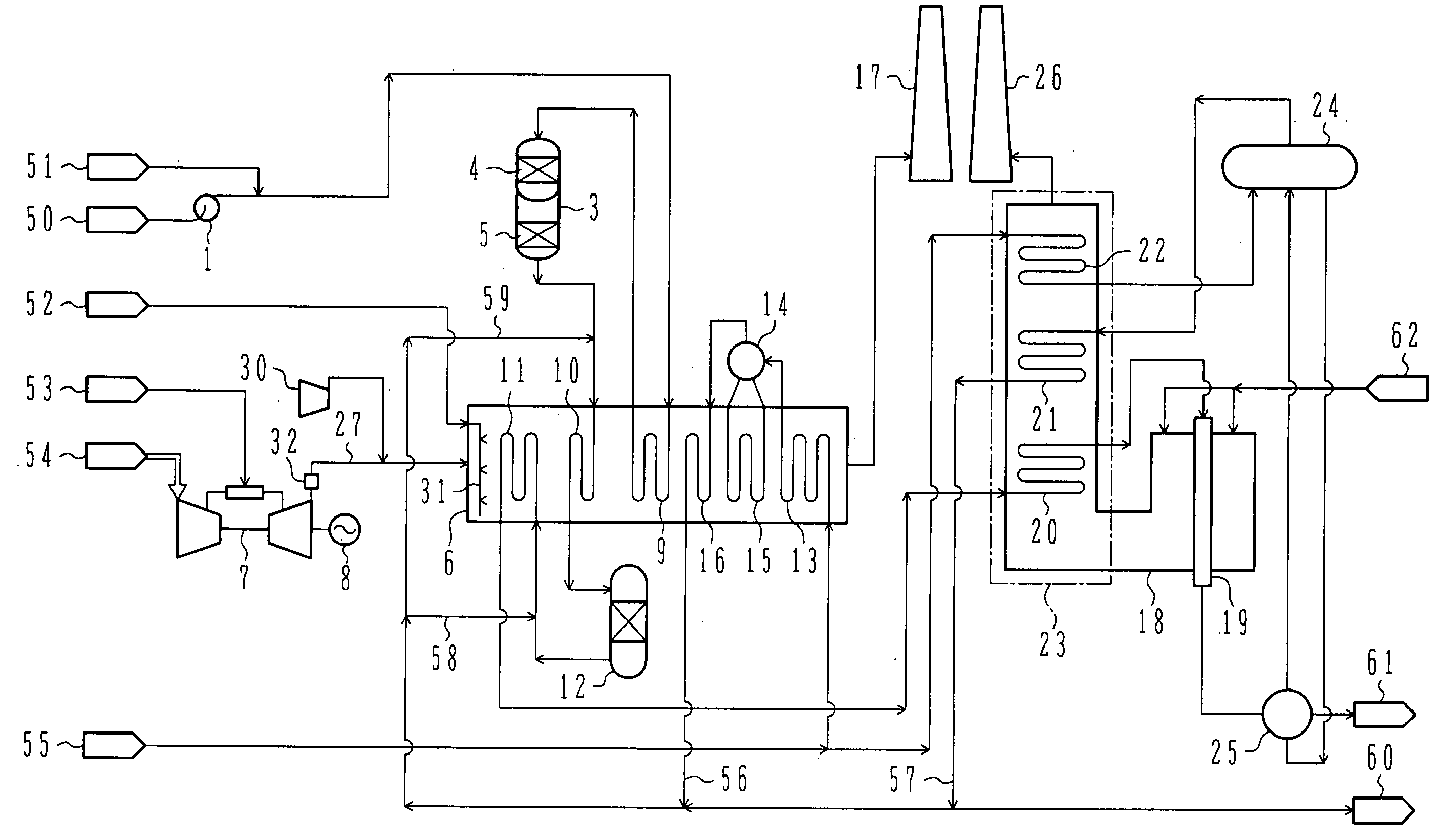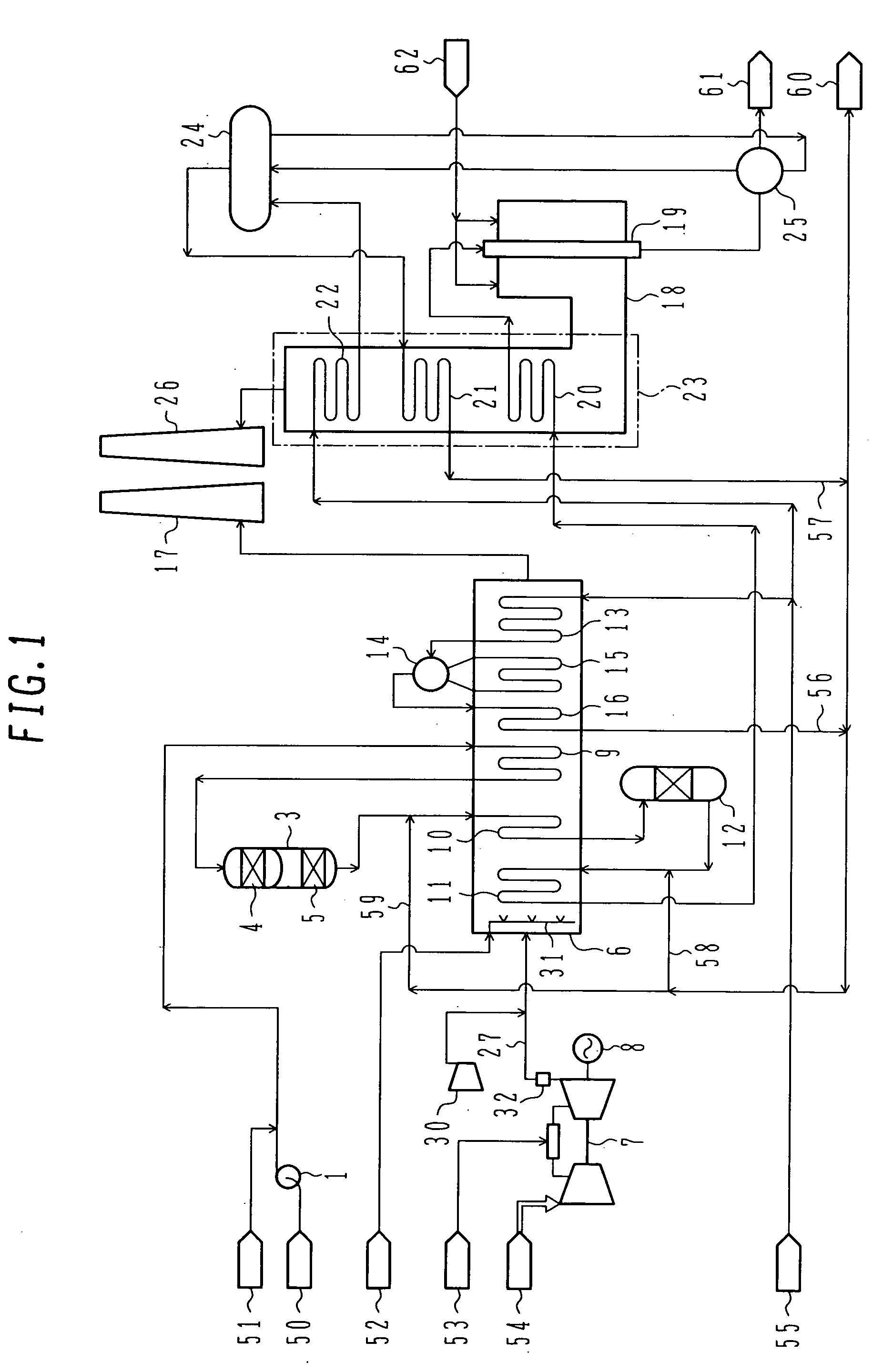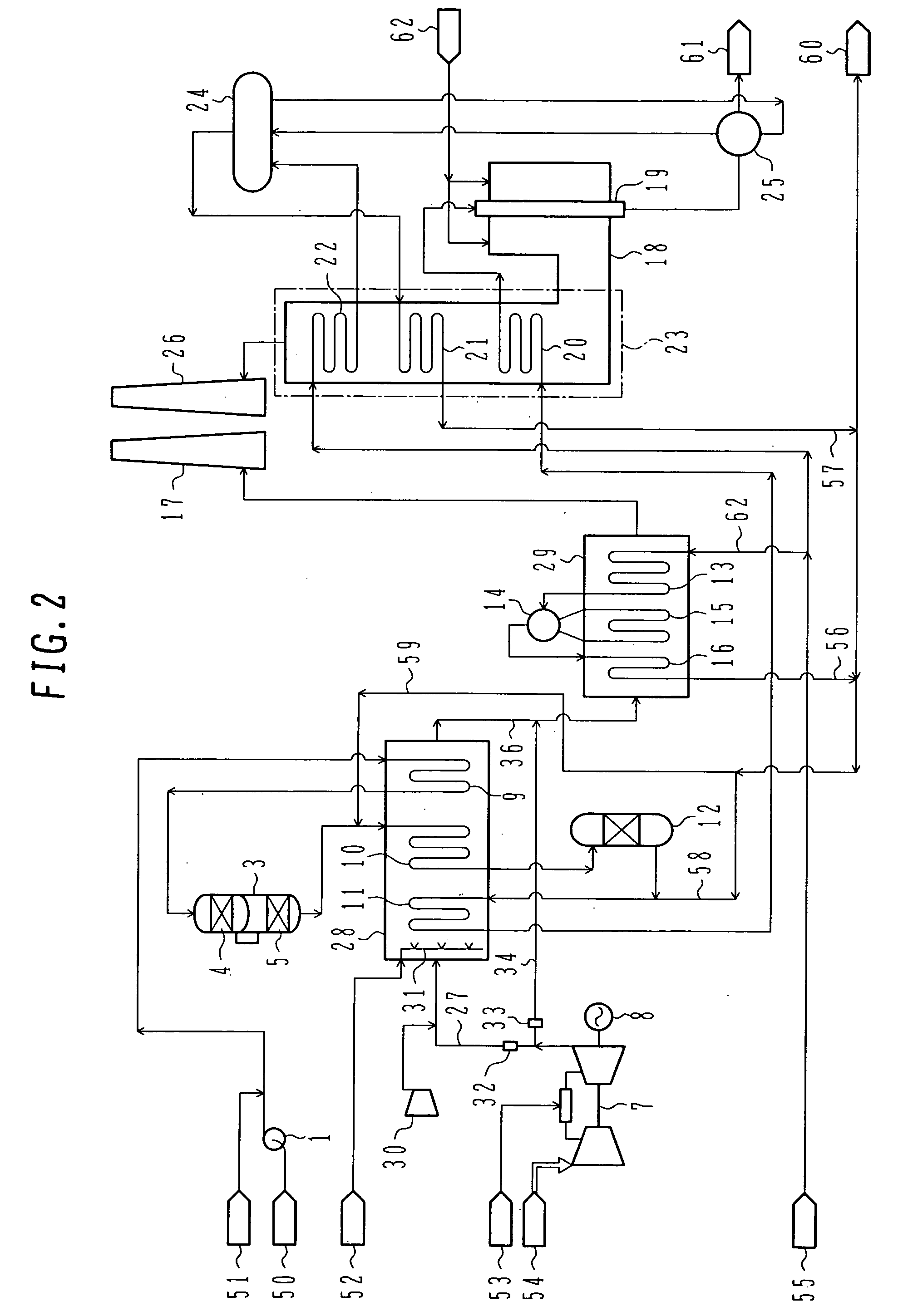Steam reforming system
a technology of steam reformer and steam pump, which is applied in the direction of mechanical equipment, machines/engines, energy input, etc., can solve the problems of reducing the radiant heat absorption efficiency of the reformer, increasing the size of the reformer, and reducing the average temperature of the combustion flue gas, so as to reduce the cost of the facility, increase the reformer size, and reduce the effect of radiant heat absorption efficiency
- Summary
- Abstract
- Description
- Claims
- Application Information
AI Technical Summary
Benefits of technology
Problems solved by technology
Method used
Image
Examples
first embodiment
[0019]FIG. 1 shows a first embodiment of the present invention in which a pre-reformer and a gas turbine are additionally installed in combination with a conventional hydrogen production plant using naphtha as feedstocks.
[0020] Referring to FIG. 1, fuel 53 is supplied to a gas turbine 7 additionally installed in combination with a reformer 18, and a power generator 8 coupled to the gas turbine 7 generates electric power. Gas turbine (GT) flue gases are discharged from a chimney 17 through a GT flue gas duct 27 and a heat recovery exchanger 6. The GT flue gas duct 27 includes a damper 32 and a blower 30.
[0021] The heat recovery exchanger 6 comprises heat exchangers, such as an economizer 13, an evaporator 15, a superheater 16, a feed preheater 9 and feed heaters 10, 11, along with a steam drum 14 and an auxiliary burner 31.
[0022] In the heat recovery exchanger 6, the feed preheater 9 and the feed heaters 10, 11 perform heat exchange between the GT flue gases and feedstocks supplie...
second embodiment
[0034] A second embodiment of the present invention will be described below with reference to FIG. 2. Note that a description of components common to those in the first embodiment is omitted here.
[0035] In this second embodiment, as shown in FIG. 2, the heat recovery exchanger 6 in the first embodiment is installed while it is divided into a first heat recovery exchanger 28 and a heat recovery steam generator 29 serving as a second heat recovery exchanger. The heat recovery exchanger 28 is used to preheat and heat the feedstocks, and the heat recovery steam generator 29 is used to generate steam. The flue gases of the gas turbine is distributed depending on the heat capacity of the heat recovery exchanger 28 by the damper 32 disposed in the GT flue gas duct 27 and a damper 33 disposed in a GT flue gas duct 34. The GT flue gas duct 27 branched to be extended to the heat recovery exchanger 28 includes the blower 30, and the heat recovery exchanger 28 includes the auxiliary burner 31....
third embodiment
[0039] A third embodiment of the present invention will be described below with reference to FIG. 3. Note that a description of components common to those in the first and second embodiments is omitted here.
[0040] In this third embodiment, the high-temperature flue gases of the gas turbine, which has bypassed the heat recovery exchanger 28, is directly introduced to the heat recovery steam generator 29, whereas the flue gases having passed the heat recovery exchanger 28 is introduced to the heat recovery steam generator 29 in its section (intermediate section) where the flue gases directly supplied from the gas turbine flow at temperature close to that of the flue gases introduced from the heat recovery exchanger 28. Stated another way, the second GT flue gas duct 36 connects the outlet of the heat recovery exchanger 28 to the intermediate section of a flue gas path in the heat recovery steam generator 29, and the third GT flue gas duct 34 connects an outlet of the gas turbine 7 (o...
PUM
| Property | Measurement | Unit |
|---|---|---|
| Flow rate | aaaaa | aaaaa |
Abstract
Description
Claims
Application Information
 Login to View More
Login to View More - R&D
- Intellectual Property
- Life Sciences
- Materials
- Tech Scout
- Unparalleled Data Quality
- Higher Quality Content
- 60% Fewer Hallucinations
Browse by: Latest US Patents, China's latest patents, Technical Efficacy Thesaurus, Application Domain, Technology Topic, Popular Technical Reports.
© 2025 PatSnap. All rights reserved.Legal|Privacy policy|Modern Slavery Act Transparency Statement|Sitemap|About US| Contact US: help@patsnap.com



